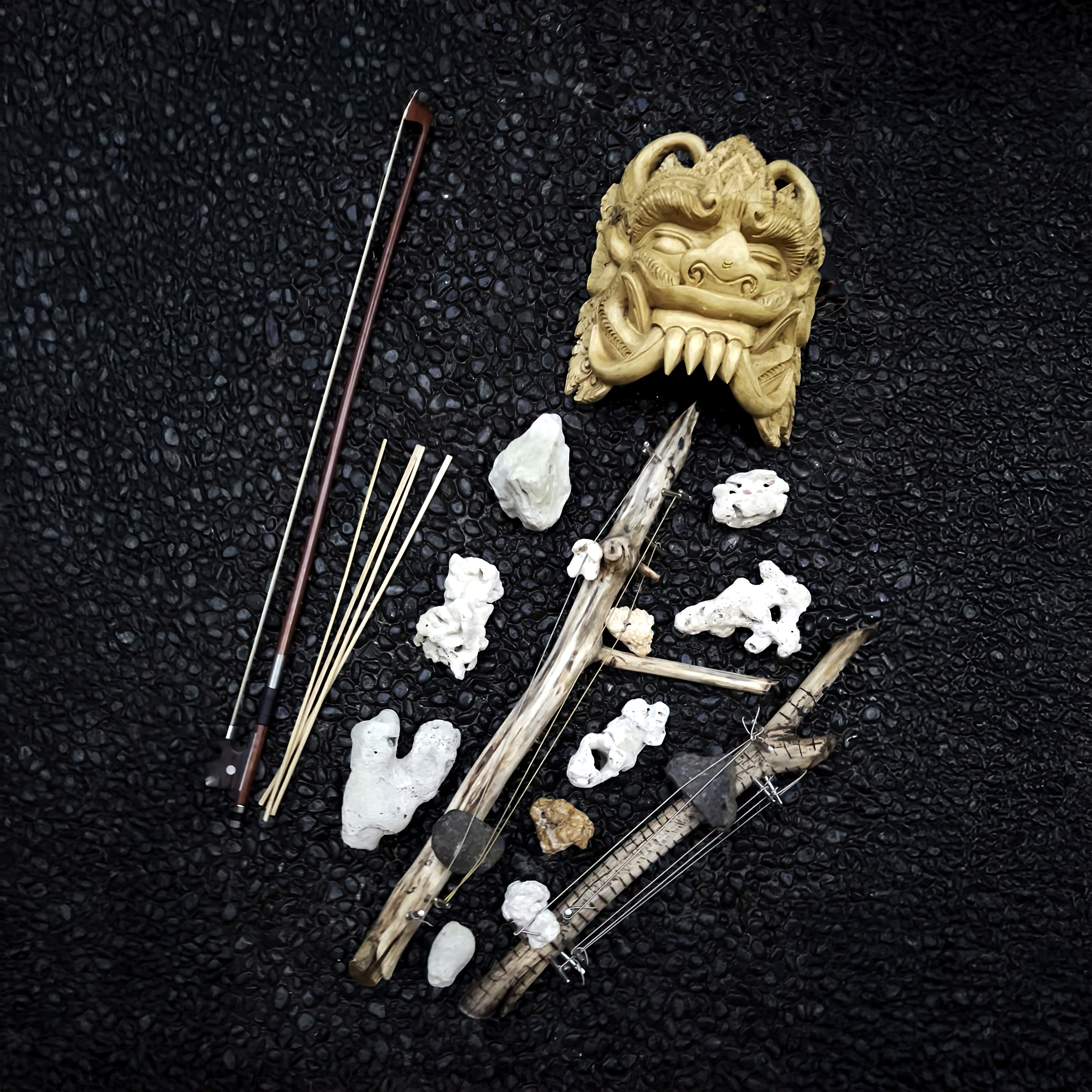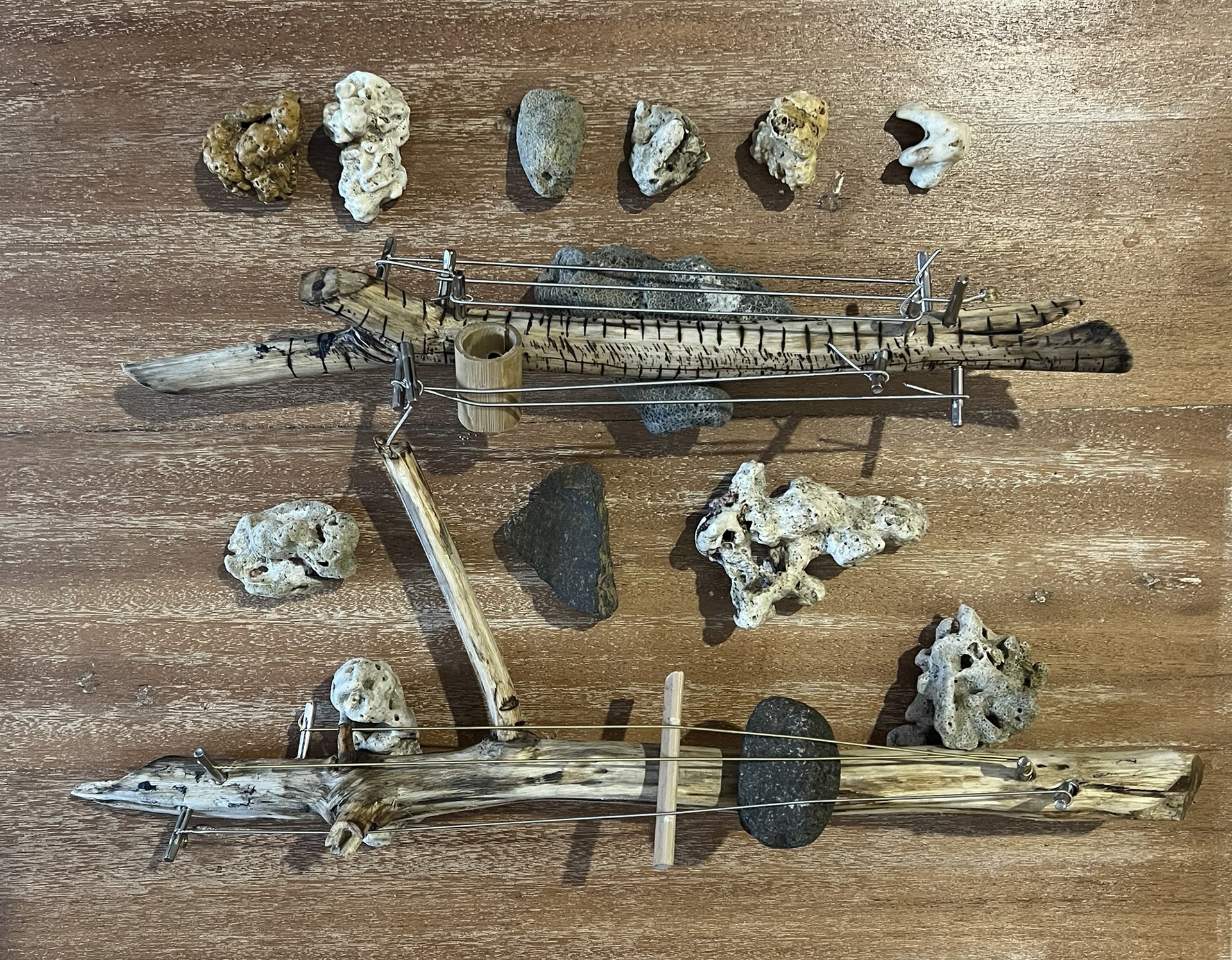The Language of Branches: New Sonic Traditions 2025
Re-coding Sustainable Art inspired by the Global South's animistic technologies and traditions. This material was recorded in Bali, Indonesia, from May 5 to 8, 2025.
The complete composition was curated with real-time improvisations interpreted in collaboration with the natural materials portrayed in the cover art photography. At the same time, a contact microphone registered the symbiosis between the human skin and the instrument's wooden body, amplifying in equilibrium any resulting texture. Additionally, coded field recordings were added from minutes 20:02 to 26:33, which were written in Yogyakarta in March 2025, when the original instruments were constructed.
The natural spirit of the interface:
Branches from Yogyakarta, and eroded stones from Nusa Dua Beach and Sekumpul Cascade in Bali.
Synthetic elements: Metallic screws and strings.
Additional materials for live performance: An AKG contact microphone and bow.
Instagram demo as percussion | with bow

Technically, my instruments share the same construction logic as the Chapareke from the Rarámuri culture in Chihuahua, Mexico. And the major peculiarity of this instrument is the harmonics that you can produce while pulsating the strings, because the branch is sustained between your lips and/or teeth, so the sounds are distorted and amplified, multiplying the quantity of harmonics, putting you in a state of trance and channeling while playing the instrument.
With this in mind, and while learning to build the Celempung with bamboo strings and play the Karinding mouth harp, both from West Java, I discovered the similarities between instruments from Asia (and Siberia). So, I decided to create a new instrument, adding extra possibilities with the quantity and type of strings, as well as incorporating eroded stones further to enhance the harmonics and registers of the instrument. Finally, I decided to go beyond the very beginning of how I imagine the origins of music, building my instruments and inventing new ways to perform them.

According to Buddhism, humans are supposed to be the guardians of the Planet, of Nature, and of other species and resources. But we are not. In contrast, for thousands of years, indigenous civilizations have known and practiced this with love and care. I want to emphasize the simplicity of life and the more spiritual technologies that consider planetary materials as collaborators, on how beautiful it is to listen to even inanimate Nature, for starters.
Julian Bonequi, Bali, May 28, 2025.
